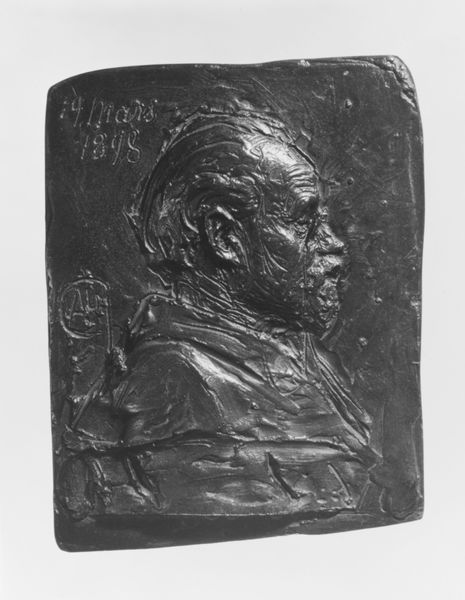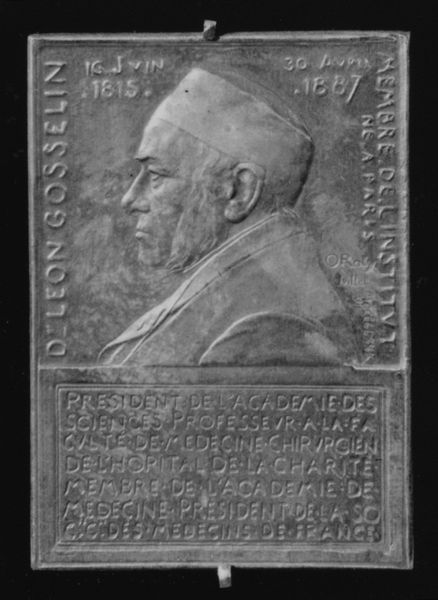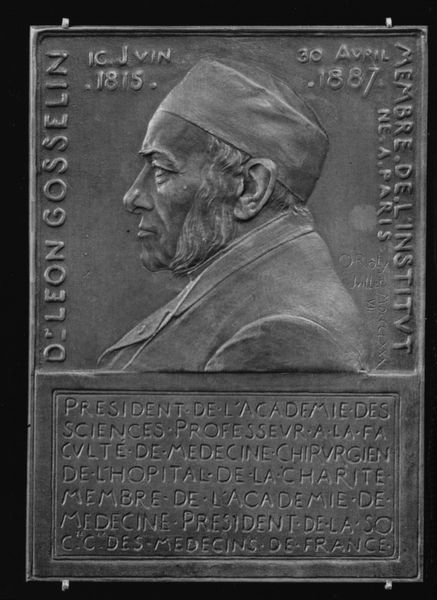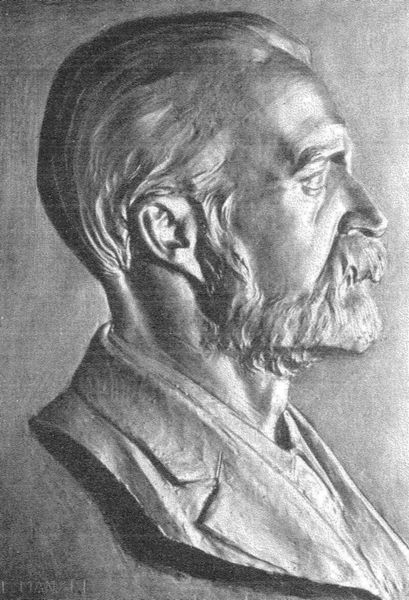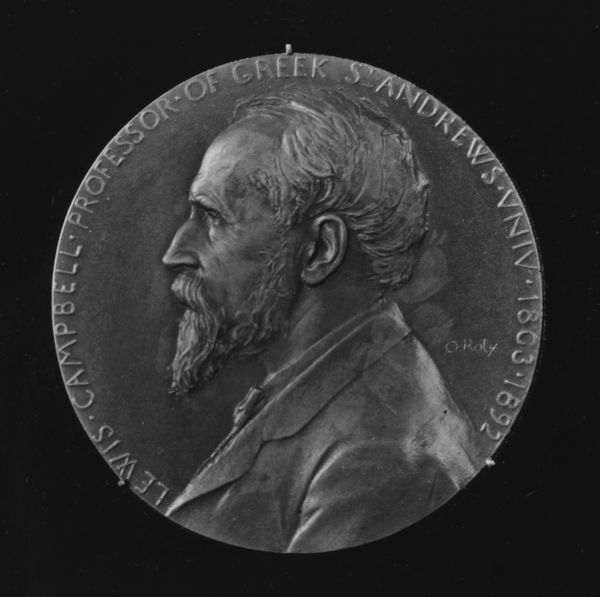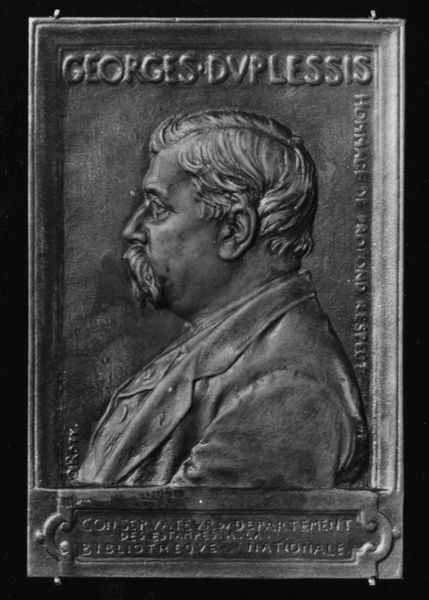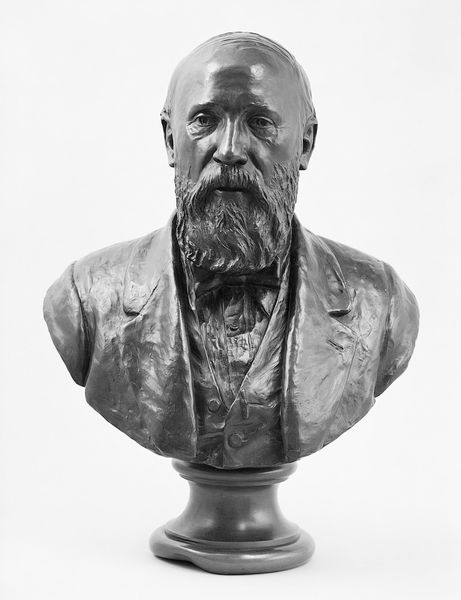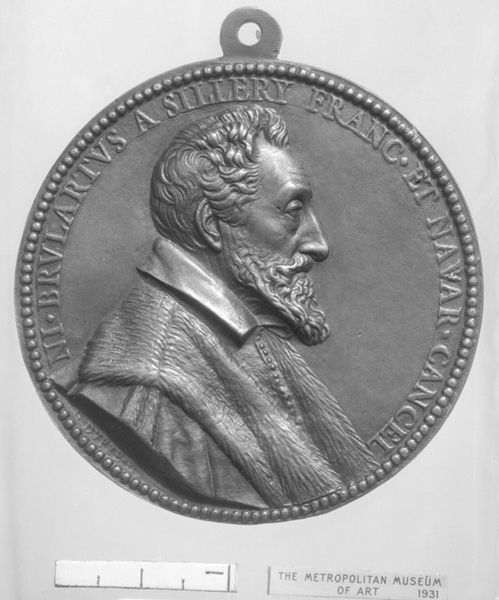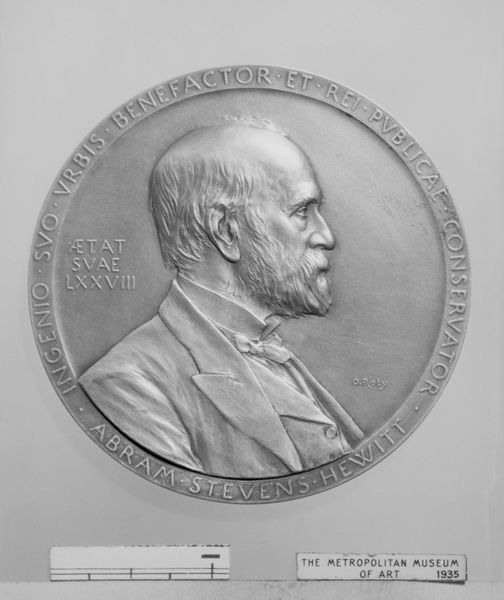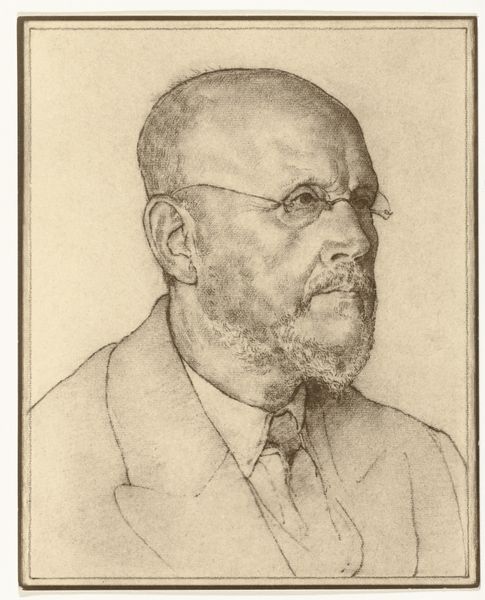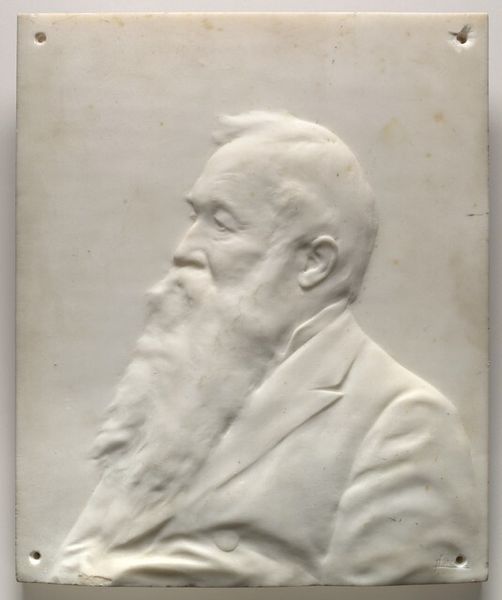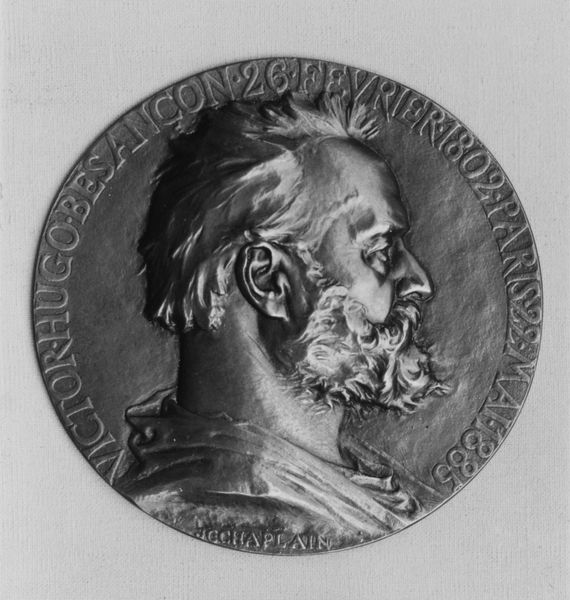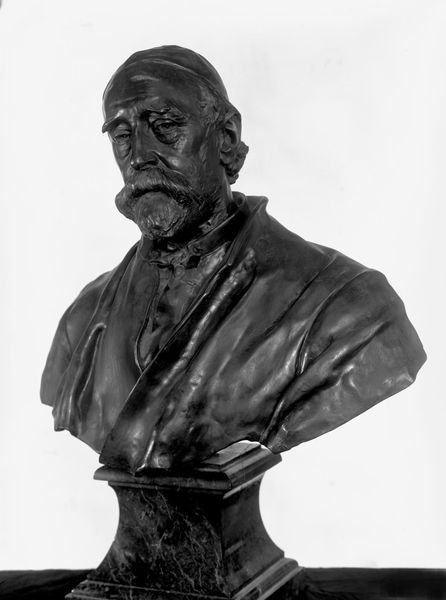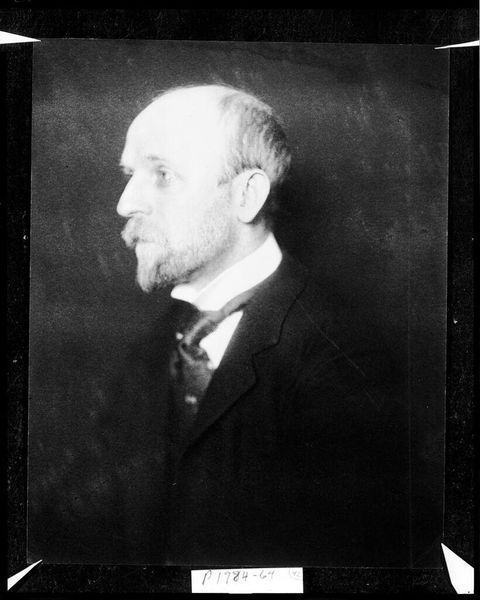
In Honor of M. Eudoxe Marcille, Director of the Museum of Orleans 19th century
0:00
0:00
metal, relief, sculpture
#
portrait
#
medal
#
neoclassicism
#
metal
#
sculpture
#
close up portrait
#
relief
#
black colour
#
sculpture
#
history-painting
#
academic-art
#
decorative-art
Dimensions: 4 1/16 × 2 5/16 in. (103 × 59 mm)
Copyright: Public Domain
Curator: I'm struck by the somber dignity of this portrait medal. The way the light catches the brow… it’s as if it’s meant to capture not just likeness, but the very essence of respect. Editor: Absolutely. And there's a clear visual hierarchy happening. The portrait takes center stage while inscription acts almost like secondary text adding context to the primary image. Almost like he's eternally in service of art and education. Curator: Precisely. This work, "In Honor of M. Eudoxe Marcille, Director of the Museum of Orleans," dating from the 19th century, created by Louis-Oscar Roty. What strikes me most is the use of classical iconography, blended with what was then a modern form of portraiture – the medal. We see a clear nod to the Roman tradition of honoring civic leaders. Editor: True, and that deliberate referencing feels charged given France's post-revolutionary climate at the time. It raises interesting questions around civic memory and which leaders were deemed worthy of monumentalization. Was there ever public criticism, do we know? Curator: While primary sources are always limited with objects like this, we do see the imagery associated with enlightened civic leaders from this period – thoughtful gaze, distinguished bearing. Roty seems to be using a visual language designed to connect Marcille to a lineage of honorable public service. Look at how his beard recalls the tradition of great thinkers. Editor: The weight of representation feels enormous. Everything from the textured metal of the medal itself, cool and timeless, and all those curls in his hair that remind of Greek philosopher heads. But who gets to decide what defines that service, who these heroes are? Was there an art workers union in place, did they influence museum structure at this time? All that history matters too, to challenge our notion of heroism and celebrate collective efforts. Curator: Those are invaluable considerations that enhance and, at times, unsettle this work, enriching our own understanding and making us examine more critically how the act of remembrance operates across historical eras. It challenges us to confront any easy sense of valor, that's clear. Editor: Indeed, moving us past blind admiration. I leave today reconsidering the political power intrinsically interwoven into these portraits that attempt to capture both a likeness and moment. What, if anything, were his contributions? Now, the real research begins... Curator: Absolutely, for my part I take with me, a richer and deeper engagement with how civic service and memory coalesce. The challenge remains of understanding both what is preserved, and, even more importantly, what the symbolic imagery attempts to obscure from view.
Comments
No comments
Be the first to comment and join the conversation on the ultimate creative platform.
